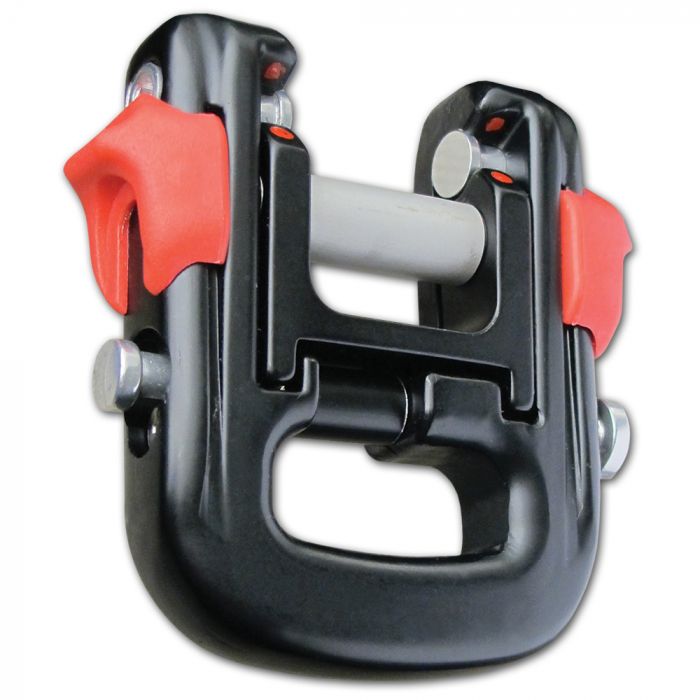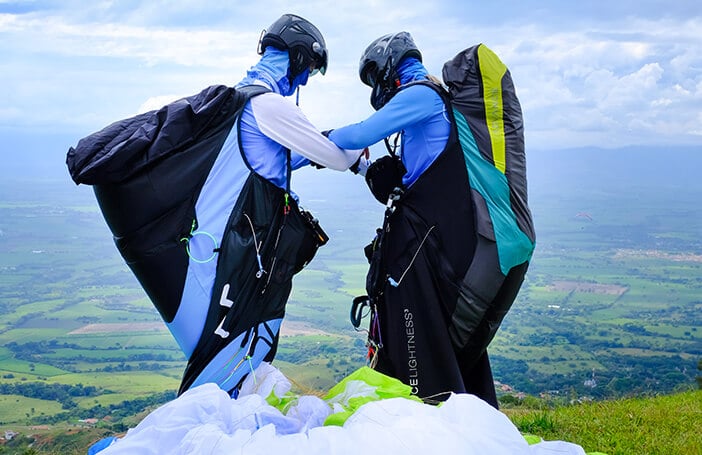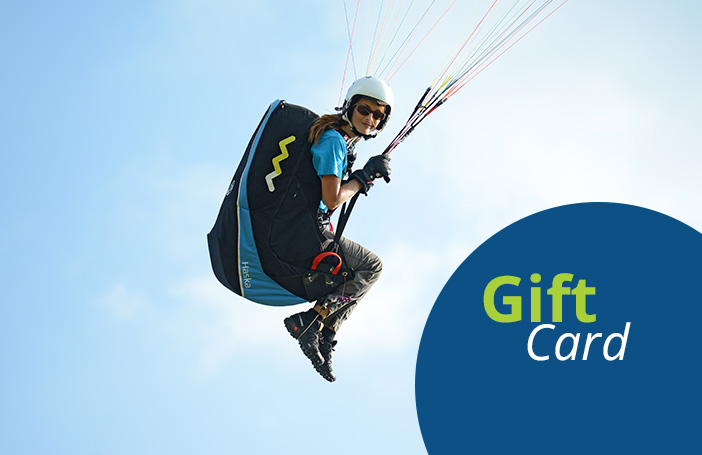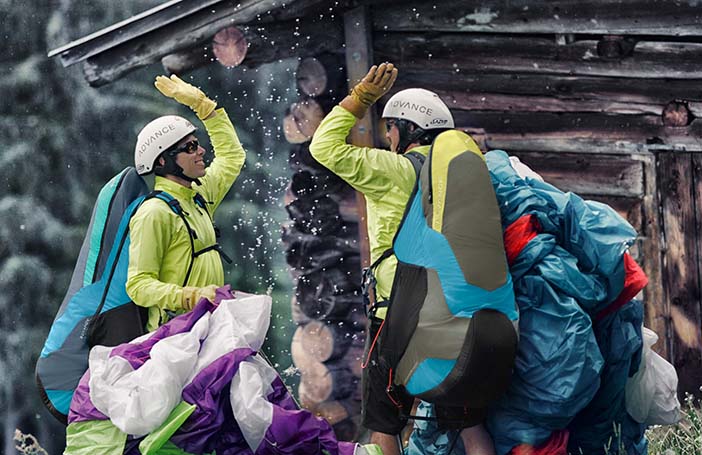Sold in pairs. The price is for a pair of Finsterwalder Quickout quick-release karabiners.
Finsterwalder Quickout karabiners
The Finsterwalder Quickout quick release carabiner is used everywhere where a reliable connection and if needed a quick release even under load is necessary. It is designed for secure load attachment - in particular for the carrying of persons - and is suitable for outdoor use. It is even established and proven in helicopter operations by police, army, mountain rescue and firefighters.
In paragliding, the use of "Quickouts" allows the quick-release of the paraglider from the paragliding harness. The simultaneous push of both lock buttons disconnects the harness from the paraglider effortlessly. This is advantageous for both solo and tandem paragliders in the case of water or tree landings, and if launching or landing in strong wind conditions.
Paraglider safety training (SIV) has also showed the release of the glider to be advantageous in the case of a emergency reserve parachute deployment. This is especially so when used with a steerable reserve parachute system e.g. Rogallo reserve system as it enables the pilots to fully utilise the steerable benefits of these systems.
The Quickout also offers superior handling compared to conventional paragliding carabiners.
Features
- Breaking load: 4.000 daN*, individually tested to 2.000 daN*
- No play in the gate, thus fatigue endurable without flight hour limitation for loads of up to 150 daN*
- Multi-secured double button locking
- Individually tested to 20 kN
- Weight 200 grams each (400 grams per pair)
- 8 year replacement interval, without flight hour limitation
Construction
- Carabiner body drop-forged from Titanal**
- Insert made of high-strength aluminium alloy 7075 T6
Important notes
Using Finsterwalder Quickouts with a paraglider with a speed system is permitted only in combination with the Finsterwalder Shackle Speed System Release (HKar14) or the Finsterwalder Brummel Hook Speed System Release (HKar141). See the Accessories section.
The Finsterwalder Quickout has to be installed according to the directions of the harness manufacturer and requires regular care. It has to be cleaned after contact with aggressive media (e.g. sea water) or with sand and dust because the buttons might jam otherwise. In case of humidity in combination with temperatures below freezing, there is a danger of icing. If the buttons are blocked, the karabiner can not be securely locked anymore. An improper locking of the karabiner is optically recognizable.
Swapping the Quickout release buttons is dangerous to life. In our instruction manual, we hence point out that the release button located on the opposite side of the installation slot must not be dismounted when attaching the carabiner to the harness. It may only be removed for cleaning purposes after the carabiner had been exposed to salt water. However, to prevent swapping the release buttons, only one button at a time may be dismounted.
One Quickout karabiner (which is attached to the harness) can be used in combination with several Quickout Extra Inserts (which are attached to the aircrafts). Extra Inserts should be ordered together with the Quickout housing so that the smooth functioning of housing and insert can be tested by the manufacturer.
The Finsterwalder Quickout is not recommended for hang gliding as it is not within the field of vision of the hang glider pilot and so correct engagement of the release buttons cannot be checked.
Accessories
- Finsterwalder Brummel Hook Speed System Release
- Finsterwalder Shackle Speed System Release
- Finsterwalder Quickout Adapter Sleeves (pair)
Spares
- Finsterwalder Quickout Security Sleeve
- Finsterwalder Quickout Extra Insert
Fatigue endurance of air sports carabiners
Paragliding carabiners are subject to permanent load changes during flight. Measurements by the DHV show that they can amount to between 10 and 110 kg and more, depending on pilot weight, pilot flight behavior and thermals, and that they can occur up to 26 times per second. Given the carabiners' high breaking load (at least 1.500 kg), such load changes should generally be unproblematic. However, conventional carabiners exhibit a construction-related peculiarity: their play in the gate. This play is necessary for the snap hook to open and close frictionless. However, the snap hook is force-locked only at weights of 30-120 kg (depending on the amount of play in the gate). As a result the pilot flies as if the carabiner lock was open within the range of the play in the gate. Since the carabiner construction - as practice and dynamic fatigue tests show - is not designed for such load cases, already the relatively low operating load during normal flight operations can lead to breakages due to material fatigue. Please note: Not all carabiners are tested for fatigue endurance. Special caution is required when the carabiner manufacturer does not give information about the replacement interval.
Materials & fatigue endurance
The fatigue endurance of carabiners is not a question of material but a question of design. In dynamic fatigue tests, some aluminum carabiners exhibited substantially higher fatigue endurance levels than steel carabiners. Although stainless steel is generally more fatigue endurable, harder and more resistant to corrosion, the difference in strength can easily be outweighed by a larger width of the aluminum component. Due to the better strength-to-weight ratio, high-quality aluminum alloys are the standard in aircraft construction.
Downloads
* 1 DAN (dekanewton) = 10 N (newton) ≈ 1 kg
*Titanal is a metal alloy composed of about 85% aluminium and the rest is zinc, magnesium, copper and zirconium. It's produced by Austria Metall AG or AMAG, the biggest company in the Austrian aluminium industry sector. Commonly used in high performance sports products, particularly snowboards and skis.

![]()





